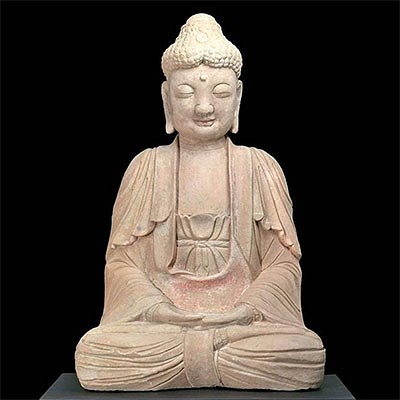Roman Gilt Brass Gorgoneion Applique
Lot 41b
About Seller
Artemis Gallery
686 S Taylor Ave, Ste 106
Louisville, CO 80027
United States
Selling antiquities, ancient and ethnographic art online since 1993, Artemis Gallery specializes in Classical Antiquities (Egyptian, Greek, Roman, Near Eastern), Asian, Pre-Columbian, African / Tribal / Oceanographic art. Our extensive inventory includes pottery, stone, metal, wood, glass and textil...Read more
Categories
Estimate:
$2,500 - $3,500
Absentee vs Live bid
Two ways to bid:
- Leave a max absentee bid and the platform will bid on your behalf up to your maximum bid during the live auction.
- Bid live during the auction and your bids will be submitted real-time to the auctioneer.
Bid Increments
| Price | Bid Increment |
|---|---|
| $0 | $25 |
| $300 | $50 |
| $1,000 | $100 |
| $2,000 | $250 |
| $5,000 | $500 |
| $10,000 | $1,000 |
| $20,000 | $2,500 |
| $50,000 | $5,000 |
| $100,000 | $10,000 |
| $200,000 | $20,000 |
About Auction
By Artemis Gallery
Feb 18, 2021
Set Reminder
2021-02-18 10:00:00
2021-02-18 10:00:00
America/New_York
Bidsquare
Bidsquare : Exceptional Antiquities, Asian, Ethnographic
https://www.bidsquare.com/auctions/artemis-gallery/exceptional-antiquities-asian-ethnographic-6373
Museum-worthy examples of Egyptian, Greek, Roman, Etruscan, Near Eastern, Far East / Asian, Pre-Columbian, African / Tribal, Oceanic, Native American, Spanish Colonial, Russian, Fossils, Ancient Jewelry, Fine Art, so much more! Artemis Gallery info@artemisgallery.com
Museum-worthy examples of Egyptian, Greek, Roman, Etruscan, Near Eastern, Far East / Asian, Pre-Columbian, African / Tribal, Oceanic, Native American, Spanish Colonial, Russian, Fossils, Ancient Jewelry, Fine Art, so much more! Artemis Gallery info@artemisgallery.com
- Lot Description
Roman, Imperial Period, ca. 1st to 3rd century CE. An elegant cast-brass applique coated with lustrous gilding in the form of a Gorgoneion, or head of a Gorgon (a human woman with hair of venomous snakes), exhibiting her traditional features of large almond-shaped eyes, a broad round nose, bulbous cheeks, and full bowed lips, slightly parted. Two snake heads sit atop her round visage, peering outwards, as their long slithering bodies twist through her serpentine locks, their tails ending at her chin. The mythic female is encompassed by a circular border of a singular striped ring and a spiraling vegetal motif, with 13 petite points adorning the periphery, 6 of which are busts with their heads facing right. The piece features a pair of drill holes, which vertically flank the Gorgoneion, for attachment. Please note that the lucite stand is for photography purposes only. Size: 3" in diameter (7.6 cm)
The concept of the Gorgon, a frightening, beast-like, female creature, is at least as old as Homer and continued to be used as a monstrous symbol throughout the Roman period. Known for transforming her viewers to stone, here she is depicted with large, striking eyes that stare straight forward, further accentuating the importance of the gaze and/or the act of sight within her mythology.
Provenance: private New Jersey, USA collection; ex-Explorer Ancient Art, New York, New York, USA; ex-private old Belgian collection
All items legal to buy/sell under U.S. Statute covering cultural patrimony Code 2600, CHAPTER 14, and are guaranteed to be as described or your money back.
A Certificate of Authenticity will accompany all winning bids.
We ship worldwide and handle all shipping in-house for your convenience.
#161089Missing one head ornament. Expected surface wear with light softening of detail and some nicks to peripheries of drill hole. Otherwise, excellent with rich patina and impressive remaining gilding.Condition
- Shipping Info
-
All shipping is handled in-house for your convenience. Your invoice from Artemis Gallery will include shipping calculation instructions. If in doubt, please inquire BEFORE bidding for estimated shipping costs for individual items.
-
- Buyer's Premium



 EUR
EUR CAD
CAD AUD
AUD GBP
GBP MXN
MXN HKD
HKD CNY
CNY MYR
MYR SEK
SEK SGD
SGD CHF
CHF THB
THB














